
The skies over Serbia, March 1999. A theater of intense geopolitical shifts, where the thunder of jet engines heralded the dawn of Operation Allied Force, NATO’s decisive action to compel Yugoslav forces to withdraw from Kosovo. Amidst this high-stakes environment, a singular event would etch itself into military aviation history, not just for its tactical significance, but for demonstrating the cutting-edge capabilities of a new generation of combat aircraft.
This was no ordinary night flight. It was the very beginning of a complex air campaign, with incredibly high stakes for allied forces entering contested airspace. The narrative of that evening is a testament to technological prowess, meticulous planning, and the sheer bravery of the pilots involved, all converging to achieve what had previously been only theory.
We are about to embark on an in-depth journey, peeling back the layers of this pivotal moment to reveal the intricate details of the first air-to-air victory of Operation Allied Force. This triumph underscored the F-16’s versatility and the strength of NATO’s combined efforts. From the Dutch F-16’s precise strike against a formidable adversary to the collaborative backbone of the Deployable Air Task Force, each element played a crucial role in shaping the outcome and defining the operational landscape.
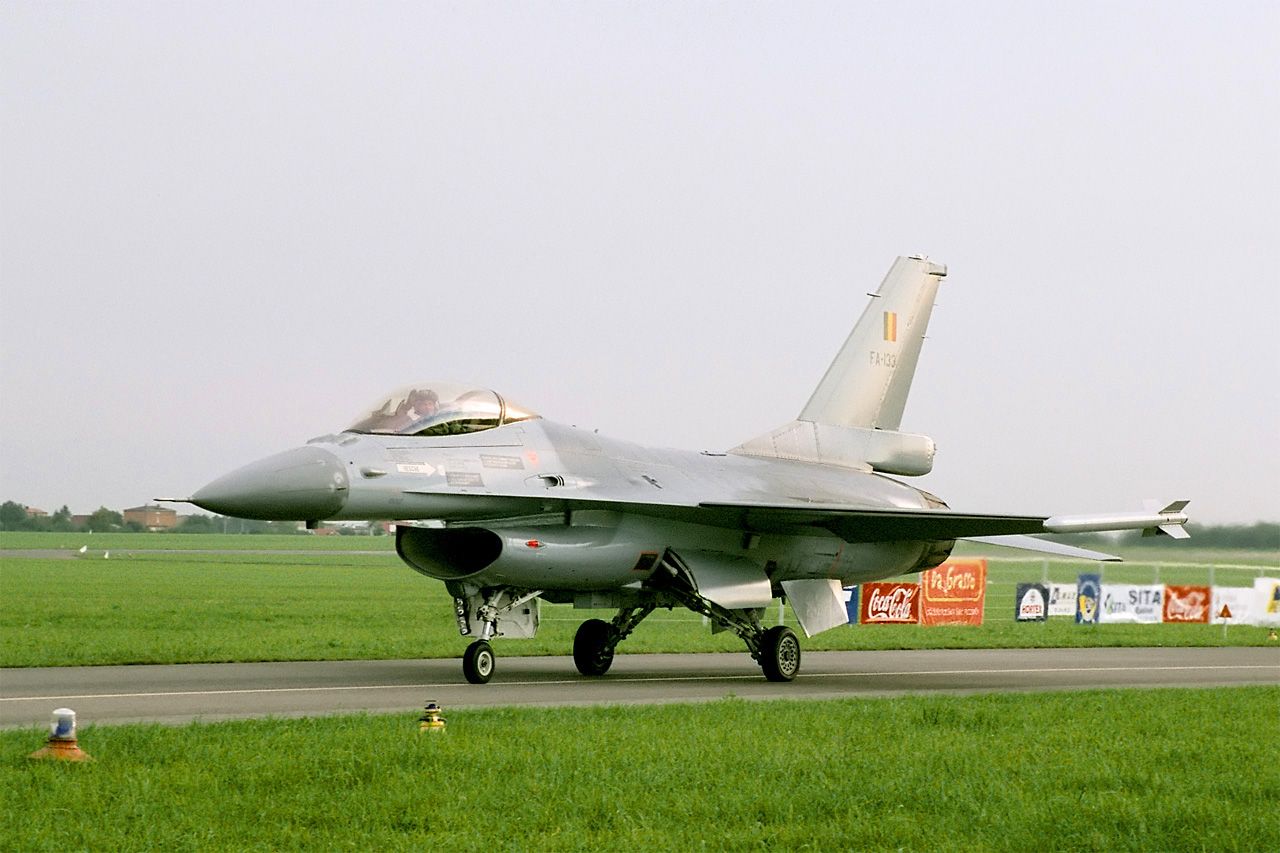
1. **The Historic Engagement: A First for the F-16 MLU** On the evening of March 24, 1999, four F-16AMs of the Royal Netherlands Air Force (RNLAF) embarked on a critical fighter escort mission. Their objective: safeguard one of NATO’s inaugural strike packages deep within Serbian airspace. These Dutch jets were among the very first NATO aircraft to penetrate the contested skies, following an in-flight refuelling, setting the stage for a landmark achievement.
As they crossed into Serbian territory, an urgent AWACS notification reported three MiG-29 aircraft scrambling from an air base near Belgrade, with one vectoring directly towards the allied formation. The lead F-16 pair detected the inbound Fulcrum first, strategically relaying crucial radar and target data to the second pair. The lead F-16 of the second pair then locked onto the low-flying Fulcrum and unleashed an AIM-120 AMRAAM. Just thirty seconds later, the hostile MiG-29 disintegrated in a fiery explosion against the night sky, vanishing from radar screens. This dramatic event marked the RNLAF’s first air-to-air victory since World War II and the inaugural aerial kill for the F-16 Mid-Life Update (MLU) variant in Operation Allied Force, swiftly confirmed by the AWACS controller. Lt. Col. Jon Abma of the RNLAF aptly stated, “Everybody is working hard to keep up with the mission tasks,” underscoring the team effort behind this pivotal moment.
Military equipment: General Dynamics F-16 Fighting Falcon
Name: F-16 Fighting Falcon
Caption: Iraq
Alt: Aerial view of jet aircraft, carrying cylindrical fuel tanks and ordnance, overflying desert
Type: Multirole combat aircraft
NationalOrigin: United States
Manufacturer: General Dynamics,Lockheed Corporation,Lockheed Martin
Builder: SABCA,Fokker,Korea Aerospace Industries,Turkish Aerospace Industries
FirstFlight: {{Start date and age,1974,01,20,df=yes,br=y
Introduction: Start date and age
Status: In service
PrimaryUser: United States Air Force
MoreUsers: #Operators
Produced: 1973–2017, 2019–present
NumberBuilt: 4,604 (as of June 2018)
Variants: General Dynamics X-62 VISTA
DevelopedInto: Vought Model 1600,General Dynamics F-16XL,Mitsubishi F-2
Categories: 1970s United States fighter aircraft, Aircraft first flown in 1974, Aircraft specs templates using more power parameter, Aircraft with retractable tricycle landing gear, All Wikipedia articles in need of updating
Summary: The General Dynamics (now Lockheed Martin) F-16 Fighting Falcon is an American single-engine supersonic multirole fighter aircraft under production by Lockheed Martin. Designed as an air superiority day fighter, it evolved into a successful all-weather multirole aircraft with over 4,600 built since 1976. Although no longer purchased by the United States Air Force (USAF), improved versions are being built for export. As of 2025, it is the world’s most common fixed-wing aircraft in military service, with 2,084 F-16s operational.
The aircraft was first developed by General Dynamics in 1974. In 1993, General Dynamics sold its aircraft manufacturing business to Lockheed, which became part of Lockheed Martin after a 1995 merger with Martin Marietta.
The F-16’s key features include a frameless bubble canopy for enhanced cockpit visibility, a side-stick to ease control while maneuvering, an ejection seat reclined 30 degrees from vertical to reduce the effect of g-forces on the pilot, and the first use of a relaxed static stability/fly-by-wire flight control system that helps to make it an agile aircraft. The fighter has a single turbofan engine, an internal M61 Vulcan cannon and 11 hardpoints. Although officially named “Fighting Falcon”, the aircraft is commonly known by the nickname “Viper” among its crews and pilots.
Since its introduction in 1978, the F-16 became a mainstay of the U.S. Air Force’s tactical airpower, primarily performing strike and suppression of enemy air defenses (SEAD) missions; in the latter role, it replaced the F-4G Wild Weasel by 1996. In addition to active duty in the U.S. Air Force, Air Force Reserve Command, and Air National Guard units, the aircraft is also used by the U.S. Air Force Thunderbirds aerial demonstration team, the US Air Combat Command F-16 Viper Demonstration Team, and as an adversary/aggressor aircraft by the United States Navy. The F-16 has also been procured by the air forces of 25 other nations. Numerous countries have begun replacing the aircraft with the F-35 Lightning II, although the F-16 remains in production and service with many operators.
Get more information about: General Dynamics F-16 Fighting Falcon
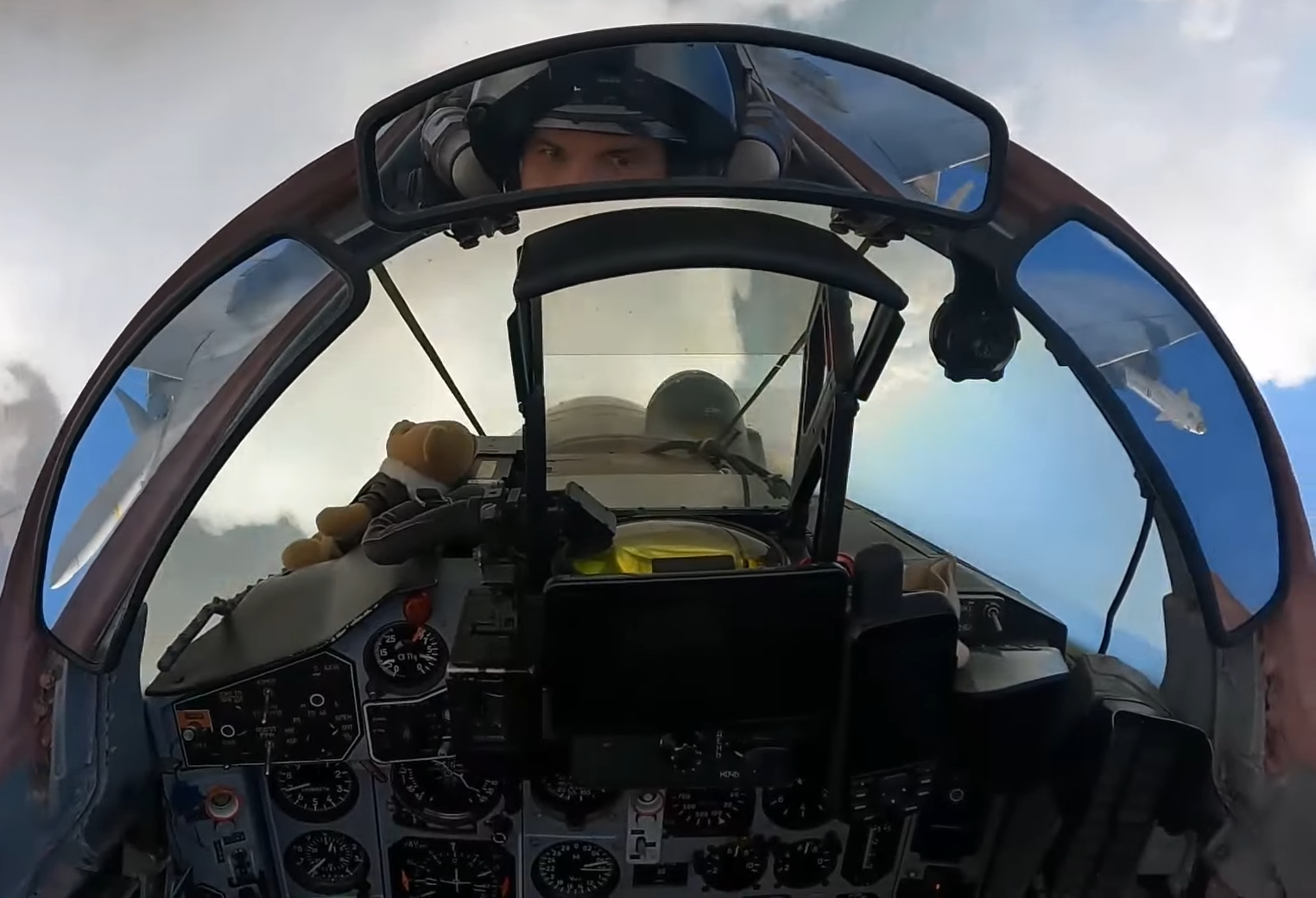
2. **The F-16 MLU Advantage: A Game-Changer in the Sky** The successful engagement of the MiG-29 profoundly demonstrated the F-16 Mid-Life Update’s (MLU) superior capabilities, which meticulously identified it for the most demanding missions from the outset of Operation Allied Force. Unlike non-MLU F-16s, initially restricted to daytime operations, the MLU variants were called upon for varied missions around the clock. This adaptability was a testament to their advanced design and integrated systems.
What truly distinguished the Dutch MLU F-16s was their formidable all-weather and beyond-visual-range missile capability. Armed with the AIM-120 AMRAAM, these aircraft were ideally suited for critical “fighter escort sweep missions,” tasked with clearing airspace of potential threats before larger strike packages could proceed. This inherent advantage meant effective operation regardless of environmental conditions or engagement distances, providing unparalleled protection to allied assets. Furthermore, the F-16 MLU’s versatility extended beyond air-to-air dominance. Equipped with the AGM-65 Maverick, these jets could seamlessly transition from aerial combat to providing “emergency close air support” if ground targets required urgent attention, a “swing role” much appreciated by the Combined Air Operations Center (CAOC) in Vicenza, Italy.
Military equipment: Joint Direct Attack Munition
Name: Joint Direct Attack Munitions
Caption: Mark 84 bomb
Origin: United States
IsRanged: true
IsMissile: true
Service: Since 1999
UsedBy: #Operators
Wars: NATO bombing of Yugoslavia,Kurdish–Turkish conflict (1978–present),War on Terror,War in Afghanistan (2001–2021),Iraq War,War in North-West Pakistan,Al-Qaeda insurgency in Yemen,Somalia War (2006–2009),Somali Civil War (2009–present),2011 military intervention in Libya,Syrian Civil War,US intervention in the Syrian civil war,US-led intervention in Iraq (2014–2021),Turkish military intervention in Syria (August 2016 – March 2017),Operation Olive Branch,War in Iraq (2013–2017),Yemeni Civil War (2015–present),Saudi Arabian-led intervention in Yemen,Houthi–Saudi Arabian conflict,Siege of Marawi,Russian invasion of Ukraine,Gaza war,Israel–Hezbollah conflict (2023–present),2024 Israeli invasion of Lebanon,Operation Prosperity Guardian,2024 missile strikes in Yemen,Iran–Israel War
Designer: McDonnell Douglas
DesignDate: Late 1980s–1996
Manufacturer: Boeing Defense, Space & Security
UnitCost: refn
Variants: #Variants
SpecLabel: #Specifications
LaunchPlatform: F-15E,F-16,F/A-18,F/A-18E/F,McDonnell Douglas AV-8B Harrier II,A-10,B-1B,B-52H,F-22,B-2A,F-35,General Atomics MQ-9 Reaper,MiG-29,Su-27,Panavia Tornado,Gripen
Ref: Janes Information Services
Categories: All articles with dead external links, All articles with unsourced statements, Articles with dead external links from March 2023, Articles with permanently dead external links, Articles with short description
Summary: The Joint Direct Attack Munition (JDAM) is a guidance kit that converts unguided bombs, or “dumb bombs”, into all-weather precision-guided munitions (PGMs). JDAM-equipped bombs are guided by an integrated inertial guidance system coupled to a Global Positioning System (GPS) receiver, giving them a published range of up to 15 nautical miles (28 km). JDAM-equipped bombs range from 500 to 2,000 pounds (230 to 910 kg). The JDAM’s guidance system was jointly developed by the United States Air Force and United States Navy, hence the “joint” in JDAM. When installed on a bomb, the JDAM kit is given a GBU (Guided Bomb Unit) identifier, superseding the Mark 80 or BLU (Bomb, Live Unit) nomenclature of the bomb to which it is attached.
The JDAM is not a stand-alone weapon; rather it is a “bolt-on” guidance package that converts unguided gravity bombs into PGMs. The key components of the system are a tail section with aerodynamic control surfaces, a (body) strake kit, and a combined inertial guidance system and GPS guidance control unit.
The JDAM was meant to improve upon laser-guided bomb and imaging infrared technology, which can be hindered by bad ground and weather conditions. Laser seekers are now being fitted to some JDAMs.
From 1998 to November 2016, Boeing completed more than 300,000 JDAM guidance kits. In 2017, it built more than 130 kits per day. As of January 2024, 550,000 kits had been produced.
Get more information about: Joint Direct Attack Munition
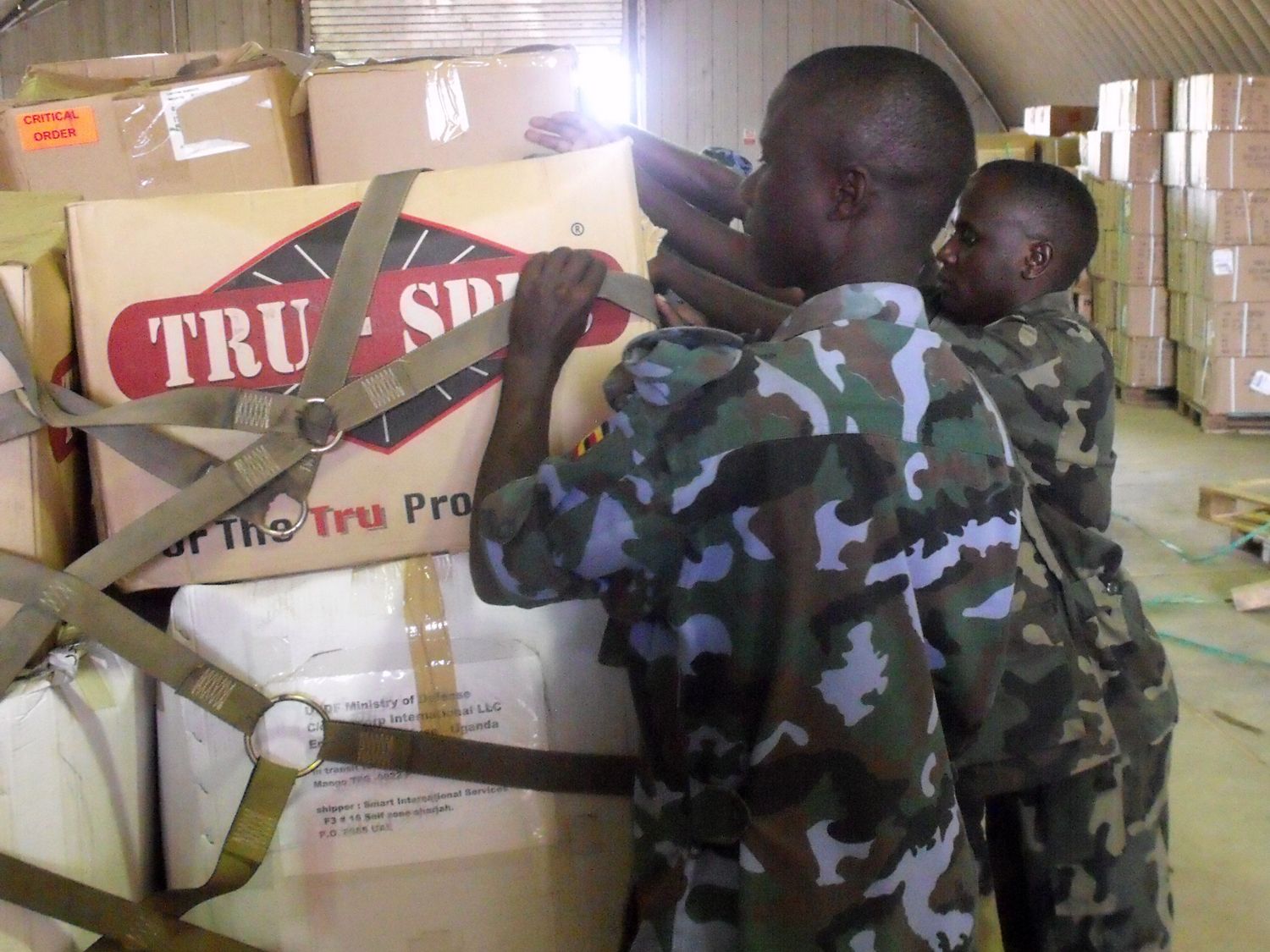
3. **The Deployable Air Task Force (DATF): A Model of International Cooperation** The Deployable Air Task Force (DATF) formed the very backbone of the F-16’s early operational success in Allied Force. This innovative joint detachment, based at Amendola Air Base, was forged through close collaboration between the Royal Netherlands Air Force (RNLAF) and their Belgian Air Force colleagues. It represented a pioneering approach to military operations, embodying the spirit of NATO’s interoperability and shared strategic goals.
Operating under a singular, unified command, the DATF transcended traditional national boundaries. This unique structure allowed personnel from one nation to serve under the command of an officer from another, fostering an unprecedented level of integration and mutual trust. As Lt. Col. Frank DeWinne noted, the “transparency of the organization and the intensity of our mutual cooperation” made “who holds command” largely irrelevant, defining the detachment’s effectiveness. Comprising a significant force of thirty-two F-16s, the DATF functioned as a powerful, cohesive operational unit, ensuring missions were executed with maximum efficiency and impact, leading the operation from its very inception due to the advanced capabilities of the MLU F-16s.
Military equipment: AIM-120 Advanced Medium Range Air-to-Air Missile
Contractor: Raytheon
Service: USAF, USN, USMC
Propulsion: Solid Propellant Rocket.
Length: 12 feet
Diameter: 7 inches
Wingspan: AIM-120A/B 21 inches; AIM-120C/D 19 inches.
Weight: AIM-120A/B/C-4 348 pounds; AIM-120C 5/6/7/D 356 pounds.
Speed: Classified
Navy: F/A-18C/D/E/F Hornet and Super Hornet.
Air Force: F-15, F-16 and F-22
Warhead: Blast Fragmentation; high explosive
Categories: Air Force Equipment, Air Force Ordnance, Marine Corps Equipment, Marine Corps Ordnance, Missiles
Get more information about: AIM-120 Advanced Medium Range Air-to-Air Missile

4. **Strategic Deployment and Readiness: Gaining Early Operational Experience** The DATF’s journey to its pivotal role at Amendola Air Base involved significant strategic foresight and meticulous planning, yielding invaluable early operational experience. The detachment relocated from Villafranca Air Base in northern Italy to Amendola, near Foggia in southern Italy, in January, coinciding with Villafranca’s closure for runway repairs. This logistical necessity became a strategic advantage.
Crucially, during this period, MLU F-16s were delivered to the DATF permanently, marking a historic milestone. The Royal Netherlands Air Force thus became the first air force to introduce this advanced fighter jet into an operational theater, demonstrating their commitment to leading with cutting-edge capabilities. Lt. Col. Jon Abma recalled the smooth integration, noting, “We brought a few of these aircraft to Villafranca last November when tension was building in Kosovo. That move gave us the opportunity to experience the new systems and weapons in a deployed environment.” This proactive approach allowed forces to gain crucial hands-on experience, preparing them robustly for the full onset of Operation Allied Force.
Military equipment: United States Marine Corps Force Reconnaissance
UnitName: Force Reconnaissance
Caption: Force Recon insignia
Dates: June 19, 1957 – present
Country: United States of America
Branch: flagicon image,United States Marine Corps
Type: Deep reconnaissance unit
Role: Marine Air-Ground Task Force
Size: Four companies: three active duty and one reserve
CommandStructure: Fleet Marine Force
Nickname: Force Recon, FORECON
Patron: Dion Williams,James L. Jones Sr.
Motto: Celer, Silens, Mortalis,(“Swift, Silent, Deadly”)
Battles: Vietnam War,Operation Urgent Fury,Operation Just Cause,Operation Desert Storm,Operation Restore Hope,Operation Enduring Freedom,Operation Iraqi Freedom,Operation Inherent Resolve
Categories: All Wikipedia articles in need of updating, All Wikipedia articles needing copy edit, All articles needing additional references, All articles with unsourced statements, Articles needing additional references from August 2021
Summary: Force Reconnaissance (FORECON) are United States Marine Corps reconnaissance units that provide amphibious reconnaissance, deep ground reconnaissance, surveillance, battle-space shaping and limited scale raids in support of a Marine Expeditionary Force (MEF), other Marine air-ground task forces or a joint force. Although FORECON companies are conventional forces they share many of the same tactics, techniques, procedures and equipment of special operations forces. During large-scale operations, Force Reconnaissance companies report to the Marine Expeditionary Force (MEF) and provide direct action and deep reconnaissance. Though commonly misunderstood to refer to reconnaissance-in-force, the name “Force Recon” refers to the unit’s relationship with the Marine Expeditionary Force or Marine Air-Ground Task Force. Force reconnaissance platoons formed the core composition of the initial creation of the Marine Special Operations Teams (MSOTs) found in Marine Forces Special Operations Command (MARSOC) Raider battalions, though Marine Raiders now have their own separate and direct training pipeline.
A force recon detachment has, since the mid-1980s, formed part of a specialized sub-unit, of either a Marine expeditionary unit (special operations capable) (MEU(SOC)) or a Marine expeditionary unit (MEU), known as the Maritime Special Purpose Force (MSPF) for a MEU(SOC) and as the Maritime Raid Force (MRF) for a MEU.
Get more information about: United States Marine Corps Force Reconnaissance
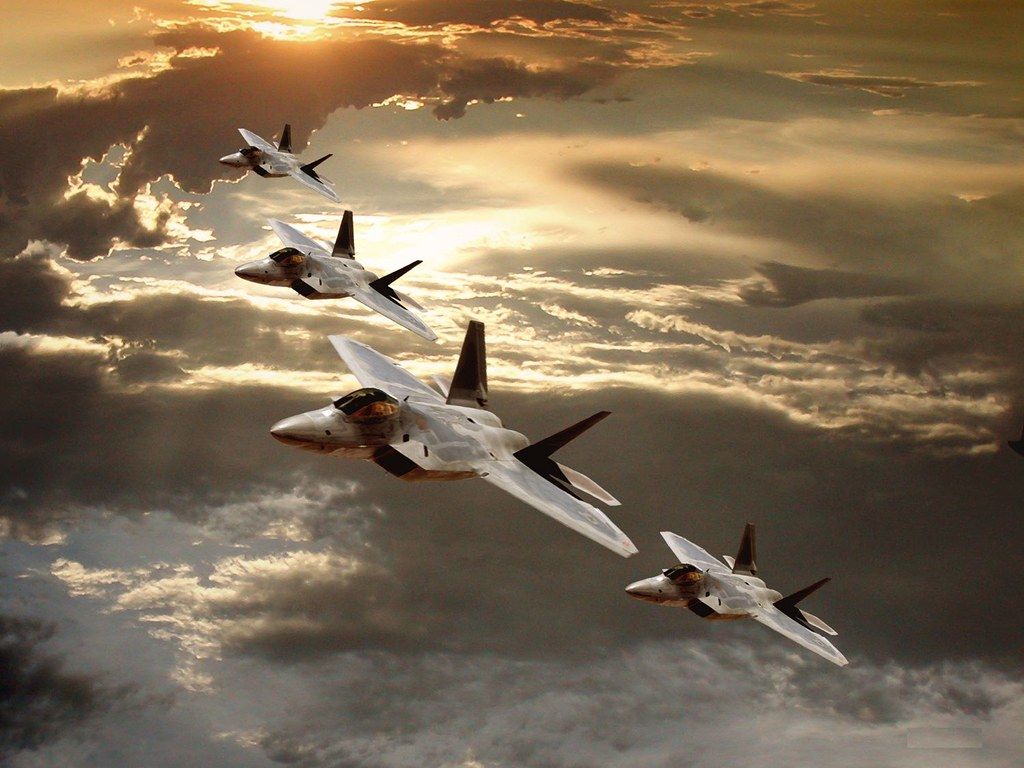
5. **Expanding Mission Horizons: From Air Superiority to Ground Attack** As Operation Allied Force gained momentum, the mission profile of the F-16s within the DATF rapidly expanded, showcasing the platform’s inherent flexibility. In late March, the Royal Netherlands Air Force began actively flying “air-to-ground missions,” deploying both their advanced MLU and non-MLU F-16s. This marked a significant tactical shift from air-to-air engagements, underscoring the F-16’s multi-role capability.
Soon after, the first three Belgian MLUs arrived, further augmenting the DATF’s strength and capabilities. The pace of operations quickened, demanding rigorous coordination and sustained effort. To maintain operational tempo, the RNLAF implemented a systematic rotation of both aircraft and personnel, ensuring continuous supply of fresh, alert crews and optimally maintained jets. This rotation included crews from Leeuwarden passing the torch to the 315 Squadron from Twenthe Air Base, a unit recently converted to the MLU variant. The following week, command of the DATF transferred to Lt. Col. Frank DeWinne, who emphasized the profound transparency and mutual cooperation defining the organization’s collaborative success, playing down individual command significance.
Military equipment: Lockheed Martin F-22 Raptor
Name: F-22 Raptor
Caption: Kadena Air Base
Alt: F-22 Raptor flies over Kadena Air Base, Japan on a flight training mission in 2009
Type: Air superiority fighter
NationalOrigin: United States
Manufacturer: Lockheed Martin Aeronautics,Boeing Defense, Space & Security
FirstFlight: Start date and age
Introduction: 15 December 2005
Status: In service
PrimaryUser: United States Air Force
Produced: 1996–2011
NumberBuilt: 195 (8 test and 187 operational aircraft)
DevelopedFrom: Lockheed YF-22
DevelopedInto: Lockheed Martin X-44 MANTA,Lockheed Martin FB-22
Categories: 1990s United States fighter aircraft, Aircraft first flown in 1997, Aircraft specs templates using more power parameter, Aircraft with retractable tricycle landing gear, All Wikipedia articles written in American English
Summary: The Lockheed Martin/Boeing F-22 Raptor is an American twin-engine, jet-powered, all-weather, supersonic stealth fighter aircraft. As a product of the United States Air Force’s Advanced Tactical Fighter (ATF) program, the aircraft was designed as an air superiority fighter, but also incorporates ground attack, electronic warfare, and signals intelligence capabilities. The prime contractor, Lockheed Martin, built most of the F-22 airframe and weapons systems and conducted final assembly, while program partner Boeing provided the wings, aft fuselage, avionics integration, and training systems.
First flown in 1997, the F-22 descended from the Lockheed YF-22 and was variously designated F-22 and F/A-22 before it formally entered service in December 2005 as the F-22A. It replaced the F-15 Eagle in most active duty U.S. Air Force (USAF) squadrons. Although the service had originally planned to buy a total of 750 ATFs to replace its entire F-15 fleet, it later scaled down to 381, and the program was ultimately cut to 195 aircraft – 187 of them operational models – in 2009 due to political opposition from high costs, a perceived lack of air-to-air threats at the time of production, and the development of the more affordable and versatile F-35 Lightning II. The last aircraft was delivered in 2012.
The F-22 is a critical component of the USAF’s tactical airpower as its high-end air superiority fighter. While it had a protracted development and initial operational difficulties, the aircraft became the service’s leading counter-air platform against peer adversaries. Although designed for air superiority operations, the F-22 has also performed strike and electronic surveillance, including missions in the Middle East against the Islamic State and Assad-aligned forces. The F-22 is expected to remain a cornerstone of the USAF’s fighter fleet until its succession by the Boeing F-47.
Get more information about: Lockheed Martin F-22 Raptor
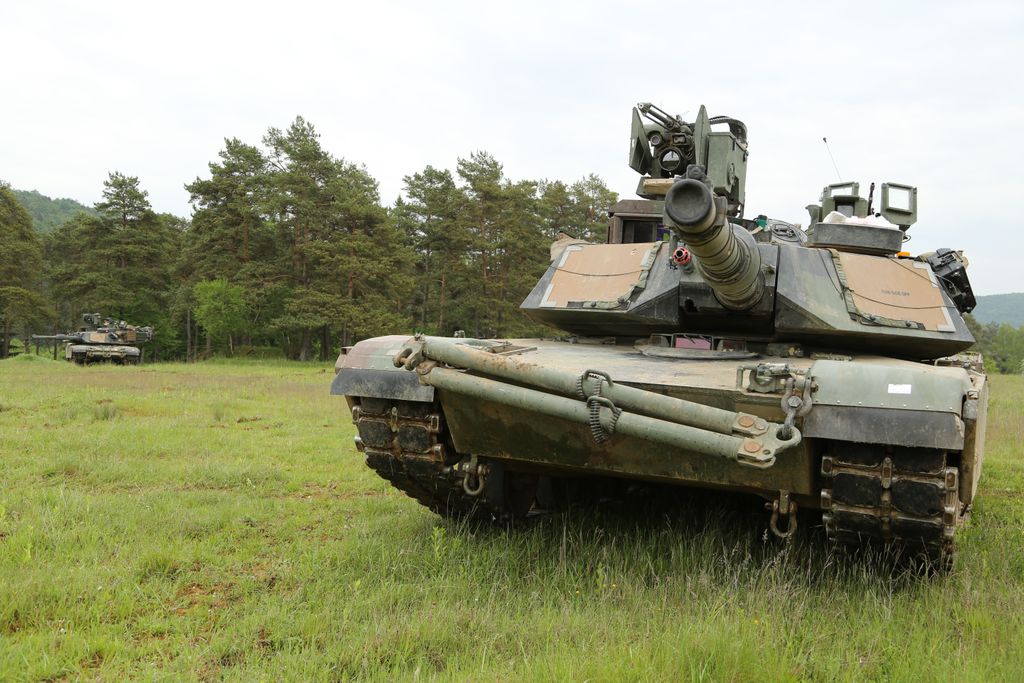
6. **The Belgian Contribution to DATF: Strengthening the Joint Force** The Belgian Air Force’s integral role within the Deployable Air Task Force was a cornerstone of the DATF’s operational strength and cohesion. Lt. Col. Frank DeWinne, commander of the DATF, also led the 349th Squadron at Kleine Brogel Air Base, distinguished as Belgium’s first squadron to convert to the advanced MLU F-16. This background provided critical leadership and expertise directly relevant to the cutting-edge capabilities of the deployed F-16s.
The Belgian contingent within the DATF was robust, comprising aircraft and personnel from the 10th Tactical Wing at Kleine Brogel, including the 349th, 23rd, and 31st squadrons. This core was further augmented by personnel from the 1st Squadron at Florennes Air Base, ensuring a broad base of experience and strong operational capacity. This comprehensive involvement meant Belgium contributed not only advanced aircraft but also highly trained pilots and support staff, deeply integrated into the DATF’s seamless operations. Their presence significantly enhanced the joint detachment’s ability to execute a wide array of missions, solidifying the DATF as a formidable and truly multinational operational asset.
Military equipment: E-8C Joint STARS
Manufacturer: Boeing
Categories: Air Force Aircraft, Air Force Equipment, Military Aircraft, Special Mission Aircraft, Surveillance Aircraft
Get more information about: E-8C Joint STARS

7. **Shifting Focus: From Air Threat to Ground Attack Dominance** As the initial aerial engagements of Operation Allied Force subsided and the Yugoslav air threat diminished, the strategic focus of the Combined Air Operations Center (CAOC) in Vicenza, Italy, underwent a notable pivot. The DATF F-16s, having proven their mettle in air-to-air combat, were increasingly tasked with “ground attack missions,” reflecting the evolving dynamics of the air campaign. This strategic adaptation demonstrated the F-16’s inherent versatility and the alliance’s ability to adjust to battlefield realities.
By this phase, the distribution of sorties clearly illustrated this shift: approximately “two-thirds” of all missions flown by the DATF were now directed “against ground targets,” while “almost one-third” remained dedicated to “combat air patrol and escort sweep missions.” This rebalancing ensured F-16s continued to play a vital role in suppressing enemy capabilities on the ground, disrupting logistical chains, and degrading military infrastructure. Further diversifying their operational capabilities, the Royal Netherlands Air Force also commenced “photo reconnaissance” missions from Amendola in late April, conducted by three F-16s from the 306th Squadron at Volkel Air Base. By late May, the cumulative effort of the “500-people-strong DATF” had yielded an impressive tally of sorties, surpassing “1,100 for the RNLAF and 600 for the BAF,” a clear indicator of their sustained high operational tempo and significant contribution to Operation Allied Force.
Military equipment: Suppression of enemy air defenses
Categories: Aerial warfare strategy, Aerial warfare tactics, All articles with dead external links, Articles with dead external links from March 2025, Articles with short description
Summary: Suppression of enemy air defenses (SEAD ), also known in the United States as “Wild Weasel” and (initially) “Iron Hand” operations, are military actions to suppress enemy surface-based air defenses, including surface-to-air missiles (SAMs), anti-aircraft artillery (AAA), and related systems such as early-warning radar and command, control and communication functions.
Suppression can be accomplished by physically destroying the systems or by disrupting and deceiving them through electronic warfare. In modern warfare, SEAD missions can constitute up to 30% of sorties launched in the first week of combat and continue at a reduced rate through the rest of a campaign. One-quarter of American combat sorties in recent conflicts have been SEAD missions. They are generally associated with aircraft, but may be performed using any means, including ground forces.
In some contexts, destruction of enemy air defenses (DEAD) refers to physical destruction of air defense targets, while SEAD applies to sorties which discourage enemy use of air-defense radar assets out of fear of placing the assets in jeopardy.
Primitive operations akin to SEAD emerged during the Second World War: efforts to degrade enemy ground radar stations. The Vietnam War saw the first SEAD missions performed by dedicated aircraft. Other early conflicts with SEAD efforts included the 1982 Falklands War, over Port Stanley, and the 1982 Lebanon War, in the Beqaa Valley. The 1990s saw extensive use of SEAD, particularly during the Gulf War. In the 1999 NATO bombing of Yugoslavia, air defenses proved less vulnerable and more effective; the downing of an F-117A Nighthawk marked the first combat loss of a stealth aircraft. In the Iraq War of the 2000s, coalition aircraft targeted Iraqi SAMs during the opening phase of the conflict, yet aerial strikes were usually performed from stand-off distances to avoid these defenses, and low-level flight was avoided. In the 2022 Russian invasion of Ukraine, while many Ukrainian air defence facilities were reportedly destroyed or damaged in the first days of the war by Russian air strikes, Russia may not have been able to gain aerial superiority; it has been alleged that Ukrainian mid-range SAM sites have forced planes to fly low, but this makes them vulnerable to shoulder-launched surface-to-air missiles.
Get more information about: Suppression of enemy air defenses
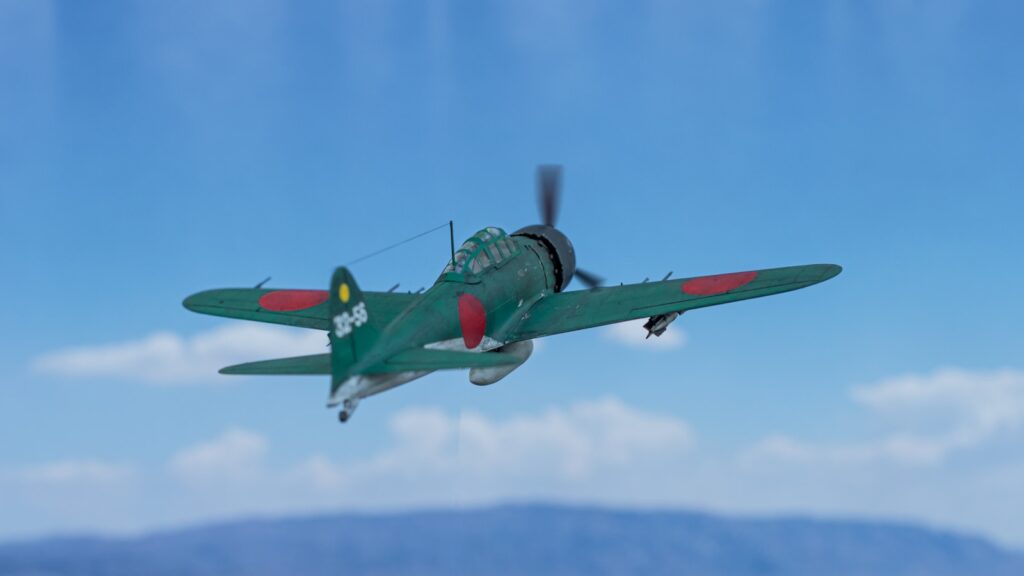
8. **Enhanced Ground Attack: The Power of Targeting Pods**The evolution of the F-16’s mission profile within Operation Allied Force was not merely about shifting focus, but about enhancing capabilities to meet new demands. As the air campaign progressed, the Royal Netherlands Air Force’s ground attack prowess received a significant boost with the introduction of advanced targeting pods. These crucial systems arrived in April, transforming the DATF’s ability to engage ground targets with pinpoint accuracy, a testament to the F-16 MLU’s adaptable design.
Initially, the RNLAF secured two LANTIRN targeting pods leased from the USAF as a temporary measure, swiftly dispatching their LANTIRN-qualified F-16 pilots to Amendola to operate them. This quick integration allowed the Dutch unit to immediately leverage precision strike capabilities. Lt. Col. Frank DeWinne, commander of the DATF, expressed immense satisfaction with these new assets, noting that “The capability has brought a new dimension to our operation,” and stating that “We can now perform precision attacks around the clock.”
This newfound precision allowed the DATF to effectively deploy laser-guided bombs such as the powerful 2,000-pound GBU-10 and the versatile 500-pound GBU-12. The impact was immediate and profound, as the “laser guided capability of the Dutch targeting pods has increased our interoperability,” according to DeWinne. This meant Belgian pilots could drop GBUs on targets precisely illuminated by their Dutch colleagues, both day and night, exemplifying true multinational cooperation. Among the critical ground targets successfully destroyed using these laser-guided bombs were three Yugoslav MiG-29s, incapacitated on the ground.
Military equipment: Sniper Advanced Targeting Pod
Categories: All articles with unsourced statements, Articles with short description, Articles with unsourced statements from December 2014, Articles with unsourced statements from June 2022, Articles with unsourced statements from May 2025
Summary: The Lockheed Martin Sniper is a targeting pod for military aircraft that provides positive target identification, autonomous tracking, GPS coordinate generation, and precise weapons guidance from extended standoff ranges.
The system has been designated AN/AAQ-33 in U.S. military service as the Sniper Advanced Targeting Pod (ATP). Further variants are the Sniper Extended Range (XR), as well as the PANTERA export derivative of the Sniper XR. The Lockheed Martin F-35 Lightning II is built with the equivalent of the Sniper XR in its onboard sensors called the AN/AAQ-40 Electro-Optical Targeting System (EOTS). The most modern version is the Sniper Advanced Targeting Pod – Sensor Enhancement (ATP-SE).
Get more information about: Sniper Advanced Targeting Pod
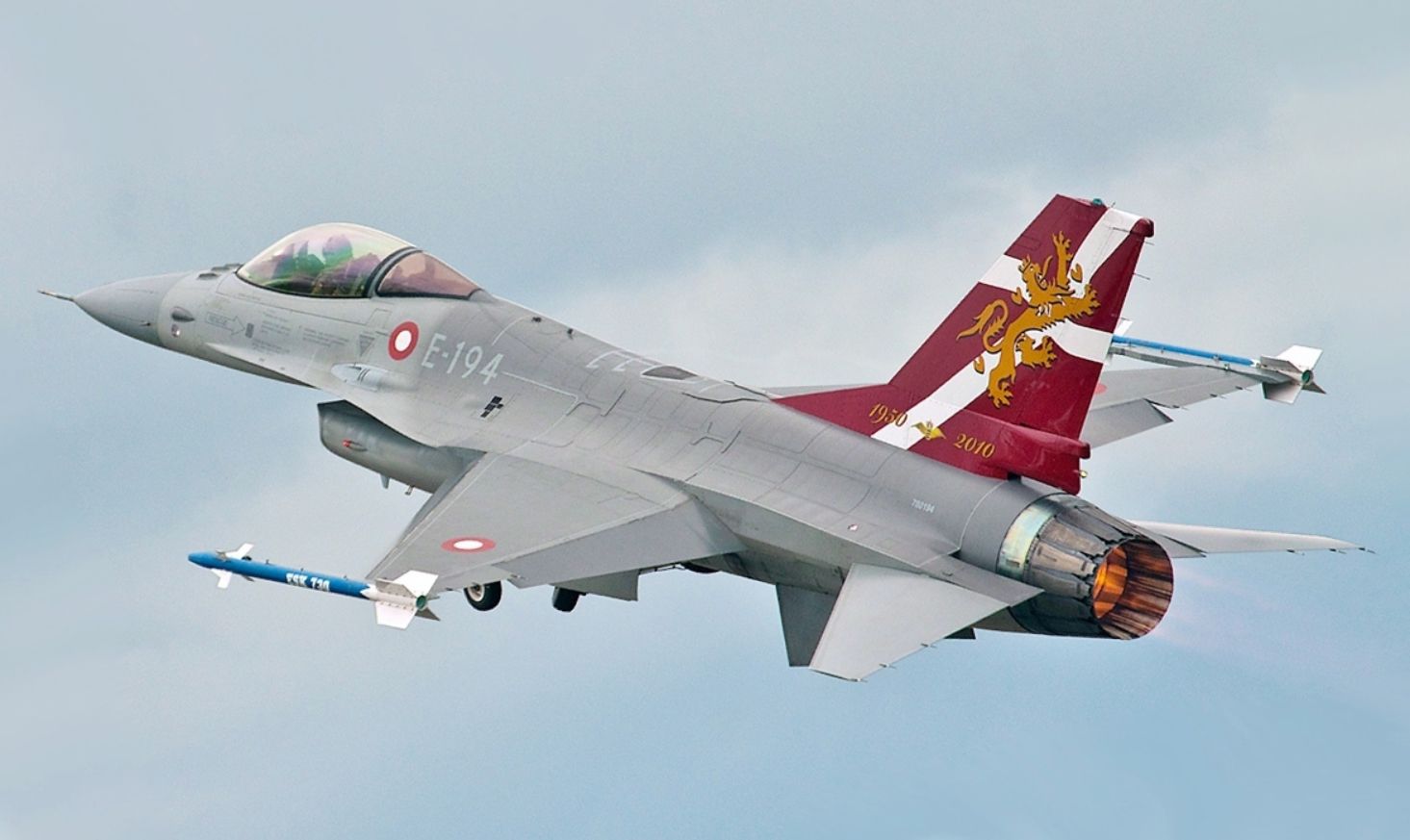
9. **Danish F-16s: Guarding the Skies from Grazzanise**Beyond the significant contributions of the Dutch and Belgian forces within the DATF, Operation Allied Force witnessed a broader display of NATO’s collective strength, with F-16 detachments from various other nations playing crucial roles. From Grazzanise Air Base near Naples, Denmark emerged as a key participant, establishing its own contingent of F-16s. This detachment, with Squadron 730 from Skrydstrup Air Base forming its core, operated under separate command yet maintained close cooperation with other allied forces.
The Danish contingent, comprising approximately one hundred personnel and led by Lt. Col. Frits Rasmussen, the operations officer of the Skrydstrup wing, was primarily tasked with defensive counter air missions. Their F-16s were vital for flying daytime combat air patrols across the entire operational area, ensuring the security of allied airspace and deterring potential threats. Like the DATF aircraft, these F-16s were armed with the AIM-120 as their principal air-to-air weapon, a missile Rasmussen lauded as “an ideal weapon for the mission, even on a non-MLU aircraft.”
A notable development for the Danish detachment was the recent introduction of MLU F-16s. On May 11, the first three MLU F-16s arrived from Aalborg Air Base, augmenting their initial fleet of nine non-MLU F-16s. This progressive upgrade signaled Denmark’s commitment to enhancing its operational capabilities and contributing the most advanced technology to the coalition, further solidifying the F-16’s role as a versatile asset across the alliance.
Military equipment: Royal Danish Air Force
UnitName: Royal Danish Air Force
NativeName: lang
Caption: Badge of the Royal Danish Air Force
StartDate: start date and age
Country: Denmark
Type: Air force
Role: Aerial warfare
Size: 3,476 personnel + 100 conscripts , 118 aircraft
CommandStructure: Danish Armed Forces
Colours: File:Air force belt.png
ColoursLabel: Stable belt
Battles: NATO bombing of Yugoslavia
Website: url
Commander1: Major General Jan Dam
Commander1Label: Chief of the Royal Danish Air Force
Commander2: René Hinrich
Commander2Label: Chief Master Sergeant of the RDAF
IdentificationSymbol: File:Roundel of Denmark.svg
IdentificationSymbolLabel: Military aircraft insignia
IdentificationSymbol2: File:Flag of Denmark (state).svg
IdentificationSymbol2Label: Fin flash
AircraftFighter: F-35 Lightning II
AircraftHelicopter: Sikorsky SH-60 Seahawk,Eurocopter Fennec,AW101
AircraftPatrol: Bombardier Challenger 600
AircraftTrainer: Saab Safari
AircraftTransport: Lockheed Martin C-130J Super Hercules
Categories: 1950 establishments in Denmark, All articles with unsourced statements, Articles containing Danish-language text, Articles with short description, Articles with unsourced statements from August 2024
Summary: The Royal Danish Air Force (Danish: Flyvevåbnet, lit. ’The Flying weapon’) (RDAF) is the aerial warfare force of the Kingdom of Denmark and one of the four branches of the Danish Armed Forces. Initially being components of the Army and the Navy, it was made a separate service in 1950. Its main purpose is to serve as enforcer of Danish airspace and to provide air support to Danish group troops on the battlefield.
Get more information about: Royal Danish Air Force
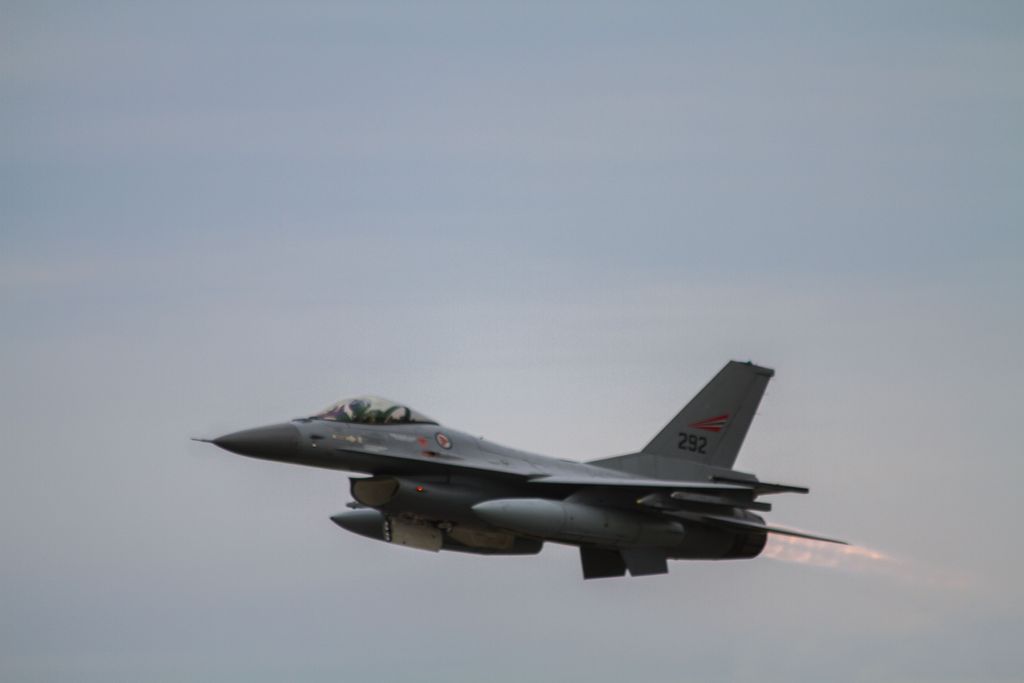
10. **Norwegian F-16s: Persistent Presence in Defensive Counter Air**Operating in close coordination with their Danish counterparts from Grazzanise Air Base, the Royal Norwegian Air Force (RNoAF) also made a vital contribution to Operation Allied Force with their F-16 detachment. Led by Col. Finn Hannestad, the operations group commander at Bodø Air Base in Norway, this detachment brought together aircraft and personnel from all RNoAF F-16 units, showcasing a comprehensive national effort.
Norway’s involvement in the Balkan mission was a relatively recent development, with their six-aircraft detachment, supported by approximately 140 personnel, arriving in Italy on January 22. Similar to the Danish forces, the Norwegians were primarily assigned defensive counter air missions. They played a critical role in maintaining continuous combat air patrols, providing an essential layer of protection for allied operations within the theater.
Notably, unlike some of their NATO allies, the Royal Norwegian Air Force’s detachment remained fully equipped with non-MLU F-16 aircraft throughout this phase of the operation. Col. Hannestad explicitly stated, “We are not planning to bring our MLUs here,” indicating a strategic decision to utilize their existing fleet effectively in the assigned defensive roles. This approach highlighted how even non-MLU variants, particularly when armed with the AIM-120, remained highly capable and crucial for the mission.
Military equipment: Foreign involvement in the Russian invasion of Ukraine
Categories: 2022 in Russia, 2022 in Ukraine, 2022 in international relations, 2023 in Russia, 2023 in Ukraine
Summary: On 24 February 2022, Russia invaded Ukraine, escalating the Russo-Ukrainian War that began in 2014 into the full-scale invasion and the biggest war in Europe since World War II. Twenty-one months later, on 20 November 2023, Ukraine had cumulatively received over $44 billion in materiel aid from the United States and over $35 billion from other allies on a month-to-month basis. The aid is logistical and is provided by drawdown of existing materiel that is then delivered to Ukraine. As this materiel is expended, the allied industrial base has been gradually drawn in to supply Ukraine but had not been fully engaged as of November 2023. Since January 2022, mostly Western nations have pledged more than $380 billion in aid to Ukraine, including nearly $118 billion in direct military aid to Ukraine from individual countries.
By the beginning of 2025, the United States has provided around half of all military aid to Ukraine, with European allies providing the other half.
According to defense expert Malcolm Chalmers, at the beginning of 2025 US provided 20% of all military equipment Ukraine was using, with 25% provided by Europe and 55% produced by Ukraine. However, the 20% supplied by the US “is the most lethal and important.”
Get more information about: Foreign involvement in the Russian invasion of Ukraine

11. **Portuguese F-16s: Learning and Adapting at Aviano**Adding another layer to the multinational F-16 presence, the Portuguese Air Force provided crucial support to Operation Allied Force from Aviano Air Base. Their detachment, consisting of three F-16s and sixty personnel from the 201st Squadron at Monte Real Air Base, was uniquely housed with the 555th Fighter Squadron—one of USAFE’s permanent F-16 units at Aviano. This integration provided an invaluable opportunity for learning and collaboration within the busiest air base of the entire operation.
Maj. Mario Barreto, commander of the Portuguese squadron, recognized the strategic advantage of their location. “We consider ourselves very lucky to be here. We are operating out of the busiest air base of the entire operation, which enables us to learn a lot,” he noted. This exposure to high-tempo, real-world operations was immensely beneficial for the Portuguese aircrews and support staff, allowing them to gain insights into complex air campaign management.
Like the Danish and Norwegian F-16s, the Portuguese jets primarily performed combat air patrol missions. However, a significant operational difference for the Portuguese was their reliance solely on the AIM-9 Sidewinder missiles for air-to-air engagements. Barreto underscored the importance of enhanced capabilities, stating, “We are hoping to receive AMRAAMs a little bit quicker now,” emphasizing the critical relevance of beyond-visual-range missile capability in modern aerial combat scenarios.
Military equipment: Improved Load Bearing Equipment – ILBE
The ILBE Pack System consists of three main components: 1) Main Pack 5,500 cubic inches
2) Assault pack 1,500 cubic inches
3) 100 oz hydration system
Additional components: 1) Three M16/M4 Magazine pouches
2) Two M67 grenade pouches
3) One M16/M4 speed reload pouch
4) One Magazine dump pouch
Categories: Packs, Personal Equipment
Get more information about: Improved Load Bearing Equipment – ILBE
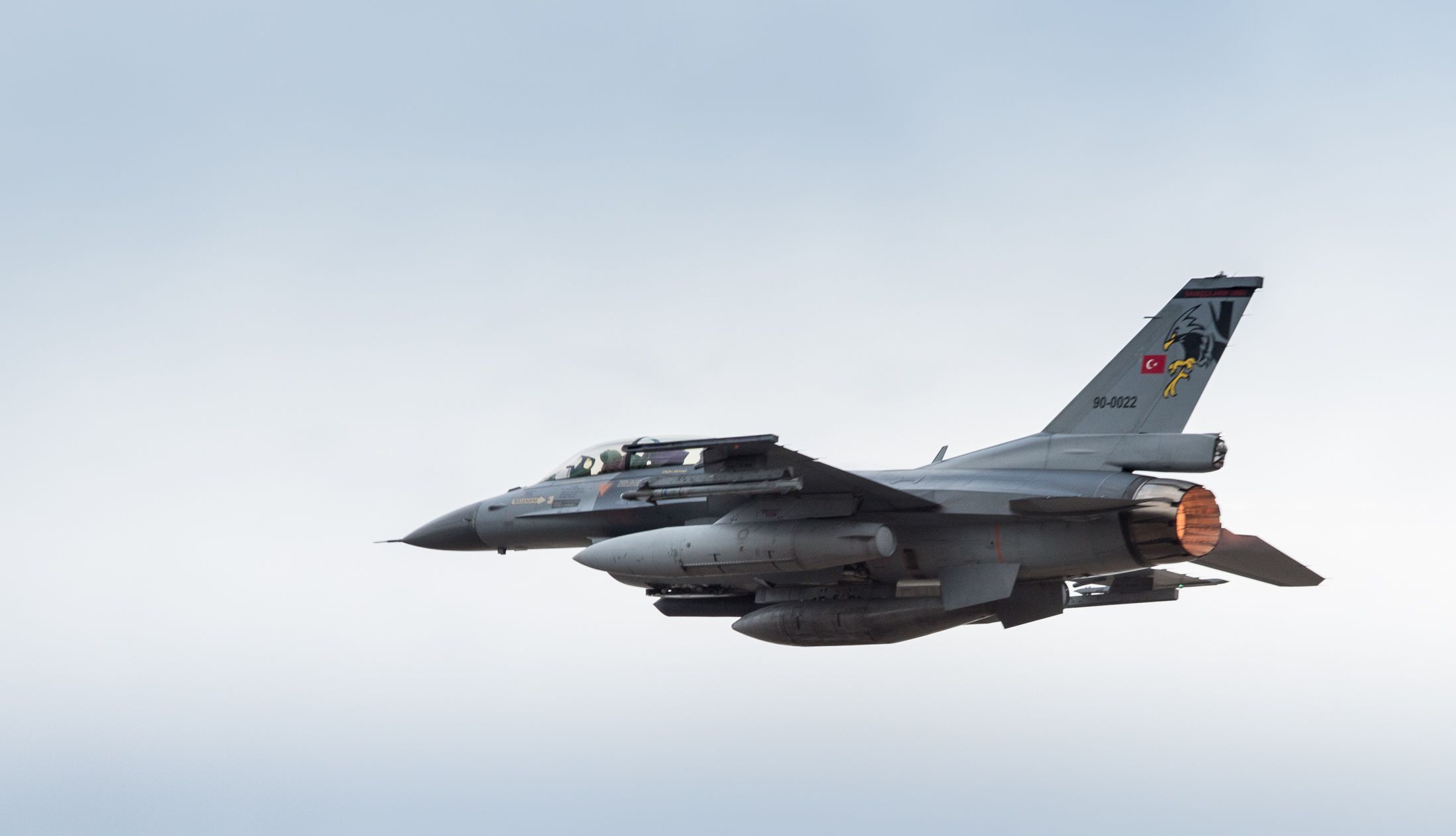
12. **Turkish F-16s: A Legacy of Balkan Operations**The extensive F-16 involvement in Operation Allied Force also saw the significant and enduring participation of the Turkish Air Force. Turkish forces had already established a substantial presence at Ghedi Air Base in Italy for several years prior to Allied Force, providing consistent support for Deny Flight operations over Bosnia. This long-term commitment had allowed Turkish pilots to accumulate an impressive record, logging over 30,000 hours in these complex operations alone, demonstrating their profound experience in the Balkan theater.
For Operation Allied Force, the Turkish Air Force further augmented its F-16 contingent at Ghedi by adding six more aircraft, signaling their increased dedication to the evolving strategic demands. This reinforcement underscored Turkey’s readiness to contribute substantially to NATO’s efforts to stabilize the region and compel Yugoslav forces to withdraw from Kosovo. Their consistent presence and accumulated expertise made them a formidable and reliable asset in the coalition.
The Turkish F-16s contributed across various mission sets, leveraging their battle-hardened experience from years of operations. Their integration into the broader Allied Force air campaign highlighted the deep interoperability and trust among NATO members, showcasing how different national detachments, each with their unique strengths and histories in the region, could combine to form a cohesive and effective aerial force.
Military equipment: General Dynamics F-16 Fighting Falcon
Name: F-16 Fighting Falcon
Caption: Iraq
Alt: Aerial view of jet aircraft, carrying cylindrical fuel tanks and ordnance, overflying desert
Type: Multirole combat aircraft
NationalOrigin: United States
Manufacturer: General Dynamics,Lockheed Corporation,Lockheed Martin
Builder: SABCA,Fokker,Korea Aerospace Industries,Turkish Aerospace Industries
FirstFlight: {{Start date and age,1974,01,20,df=yes,br=y
Introduction: Start date and age
Status: In service
PrimaryUser: United States Air Force
MoreUsers: #Operators
Produced: 1973–2017, 2019–present
NumberBuilt: 4,604 (as of June 2018)
Variants: General Dynamics X-62 VISTA
DevelopedInto: Vought Model 1600,General Dynamics F-16XL,Mitsubishi F-2
Categories: 1970s United States fighter aircraft, Aircraft first flown in 1974, Aircraft specs templates using more power parameter, Aircraft with retractable tricycle landing gear, All Wikipedia articles in need of updating
Summary: The General Dynamics (now Lockheed Martin) F-16 Fighting Falcon is an American single-engine supersonic multirole fighter aircraft under production by Lockheed Martin. Designed as an air superiority day fighter, it evolved into a successful all-weather multirole aircraft with over 4,600 built since 1976. Although no longer purchased by the United States Air Force (USAF), improved versions are being built for export. As of 2025, it is the world’s most common fixed-wing aircraft in military service, with 2,084 F-16s operational.
The aircraft was first developed by General Dynamics in 1974. In 1993, General Dynamics sold its aircraft manufacturing business to Lockheed, which became part of Lockheed Martin after a 1995 merger with Martin Marietta.
The F-16’s key features include a frameless bubble canopy for enhanced cockpit visibility, a side-stick to ease control while maneuvering, an ejection seat reclined 30 degrees from vertical to reduce the effect of g-forces on the pilot, and the first use of a relaxed static stability/fly-by-wire flight control system that helps to make it an agile aircraft. The fighter has a single turbofan engine, an internal M61 Vulcan cannon and 11 hardpoints. Although officially named “Fighting Falcon”, the aircraft is commonly known by the nickname “Viper” among its crews and pilots.
Since its introduction in 1978, the F-16 became a mainstay of the U.S. Air Force’s tactical airpower, primarily performing strike and suppression of enemy air defenses (SEAD) missions; in the latter role, it replaced the F-4G Wild Weasel by 1996. In addition to active duty in the U.S. Air Force, Air Force Reserve Command, and Air National Guard units, the aircraft is also used by the U.S. Air Force Thunderbirds aerial demonstration team, the US Air Combat Command F-16 Viper Demonstration Team, and as an adversary/aggressor aircraft by the United States Navy. The F-16 has also been procured by the air forces of 25 other nations. Numerous countries have begun replacing the aircraft with the F-35 Lightning II, although the F-16 remains in production and service with many operators.
Get more information about: General Dynamics F-16 Fighting Falcon
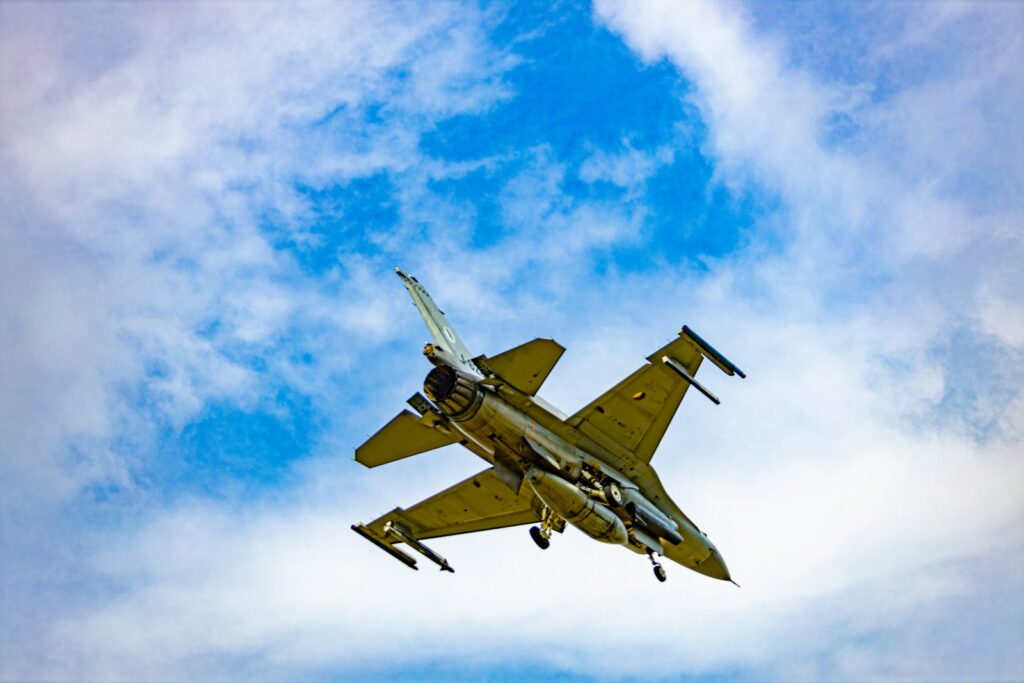
13. **The F-16’s Unmatched Versatility: A Comprehensive Test**Operation Allied Force served as an unprecedented proving ground for the F-16, rigorously testing and ultimately affirming its strength and flexibility across a spectrum of demanding missions. This conflict showcased the aircraft’s multi-role capabilities, demonstrating its indispensability in modern air warfare. The F-16 was not merely a fighter jet; it was a comprehensive aerial platform capable of adapting to the fluid realities of a complex campaign.
F-16s consistently flew ahead of strike packages, undertaking critical missions to suppress or destroy surface-to-air missile (SAM) threats, effectively paving the way for other allied aircraft. They were also frequently an integral part of those very strike packages, providing escort and, as the conflict evolved, directly engaging ground targets with precision. Furthermore, they maintained vigilant combat air patrols, forming a protective shield for the strike aircraft, ensuring their safety and mission success.
As Lt. Col. Abma aptly summarized, “This aircraft provides so many capabilities, and this operation is testing them all.” The diverse tasks performed by the F-16s—from air-to-air combat and air superiority sweeps to precision ground attack, close air support, and photo reconnaissance—underscored its design as a truly versatile “swing role” fighter. Operation Allied Force irrevocably cemented the F-16’s reputation as one of the most adaptable and formidable combat aircraft in the world.
Military equipment: Hubble Space Telescope
Name: Hubble Space Telescope
MissionType: Astronomy
Operator: Space Telescope Science Institute
CosparId: 1990-037B
Satcat: 20580
Website: nasa.gov/hubble
MissionDuration: time interval
Manufacturer: Lockheed Missiles and Space Company
LaunchMass: cvt
Dimensions: cvt
Power: watt
LaunchDate: Coordinated Universal Time
LaunchRocket: STS-31
LaunchSite: Kennedy Space Center,Kennedy Space Center Launch Complex 39B
LaunchContractor: Rockwell International
DeploymentDate: Wed Apr 25 1990 00:00:00 GMT-0700 (Pacific Daylight Time)
EnteredService: [object Object]
DecayDate: 2030s (estimated)
OrbitReference: Geocentric orbit
OrbitRegime: Low Earth orbit
OrbitPeriapsis: cvt
OrbitApoapsis: cvt
OrbitInclination: 28.47°
OrbitPeriod: 95.42 minutes
TelescopeType: Ritchey–Chrétien telescope
TelescopeDiameter: cvt
TelescopeFocalLength: cvt
TelescopeFocalRatio: f/
TelescopeArea: cvt
TelescopeWavelength: Near-infrared,visible light,ultraviolet
InstrumentsList: Infobox spaceflight/Instruments
Acronym1: Near Infrared Camera and Multi-Object Spectrometer
Name1: Near Infrared Camera and Multi-Object Spectrometer
Acronym2: Advanced Camera for Surveys
Name2: Advanced Camera for Surveys
Acronym3: Wide Field Camera 3
Name3: Wide Field Camera 3
Acronym4: Cosmic Origins Spectrograph
Name4: Cosmic Origins Spectrograph
Acronym5: Space Telescope Imaging Spectrograph
Name5: Space Telescope Imaging Spectrograph
Acronym6: Fine Guidance Sensor
Name6: Fine Guidance Sensor
Programme: Great Observatories program
NextMission: Compton Gamma Ray Observatory
Programme2: Large Strategic Science Missions
Categories: All Wikipedia articles written in American English, All articles containing potentially dated statements, Articles containing German-language text, Articles containing potentially dated statements from 2017, Articles containing video clips
Summary: The Hubble Space Telescope (HST or Hubble) is a space telescope that was launched into low Earth orbit in 1990 and remains in operation. It was not the first space telescope, but it is one of the largest and most versatile, renowned as a vital research tool and as a public relations boon for astronomy. The Hubble Space Telescope is named after astronomer Edwin Hubble and is one of NASA’s Great Observatories. The Space Telescope Science Institute (STScI) selects Hubble’s targets and processes the resulting data, while the Goddard Space Flight Center (GSFC) controls the spacecraft.
Hubble features a 2.4 m (7 ft 10 in) mirror, and its five main instruments observe in the ultraviolet, visible, and near-infrared regions of the electromagnetic spectrum. Hubble’s orbit outside the distortion of Earth’s atmosphere allows it to capture extremely high-resolution images with substantially lower background light than ground-based telescopes. It has recorded some of the most detailed visible light images, allowing a deep view into space. Many Hubble observations have led to breakthroughs in astrophysics, such as determining the rate of expansion of the universe.
The Hubble Space Telescope was funded and built in the 1970s by NASA with contributions from the European Space Agency. Its intended launch was in 1983, but the project was beset by technical delays, budget problems, and the 1986 Challenger disaster. Hubble was launched on STS-31 in 1990, but its main mirror had been ground incorrectly, resulting in spherical aberration that compromised the telescope’s capabilities. The optics were corrected to their intended quality by a servicing mission, STS-61, in 1993.
Hubble is the only telescope designed to be maintained in space by astronauts. Five Space Shuttle missions repaired, upgraded, and replaced systems on the telescope, including all five of the main instruments. The fifth mission was initially canceled on safety grounds following the Columbia disaster (2003), but after NASA administrator Michael D. Griffin approved it, the servicing mission was completed in 2009. Hubble completed 30 years of operation in April 2020 and is predicted to last until 2030 to 2040.
Hubble is the visible light telescope in NASA’s Great Observatories program; other parts of the spectrum are covered by the Compton Gamma Ray Observatory, the Chandra X-ray Observatory, and the Spitzer Space Telescope (which covers the infrared bands).
The mid-IR-to-visible band successor to the Hubble telescope is the James Webb Space Telescope (JWST), which was launched on December 25, 2021, with the Nancy Grace Roman Space Telescope due to follow in 2027.
Get more information about: Hubble Space Telescope
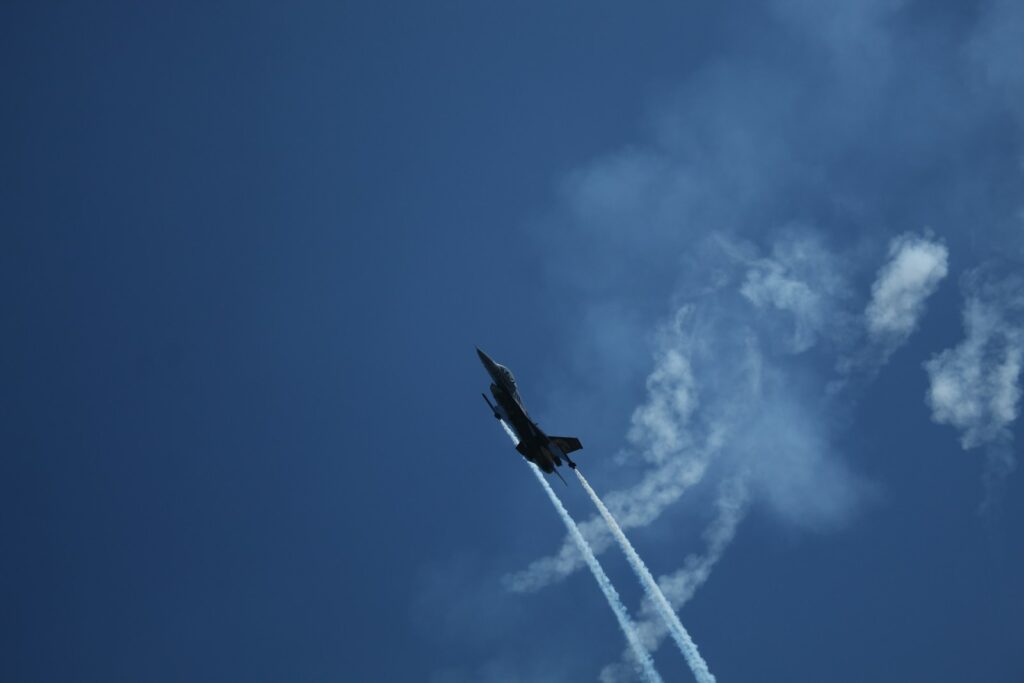
14. **The F-16’s Enduring Relevance: A Lifeline for Ukraine**Decades after its pivotal role in Operation Allied Force, the F-16 continues to demonstrate its profound and enduring relevance on the global stage, none more evident than in Ukraine’s determined pursuit of these very aircraft. Following the delivery of Abrams and Leopard-2 tanks, Kyiv has intensified its focus on securing F-16 fighter jets from NATO, viewing them as a critical component in challenging Russian air superiority and defending against missile and drone assaults.
The Royal Netherlands Air Force, whose F-16s achieved the historic MiG-29 kill during the Kosovo war, finds itself at the forefront of this contemporary discussion. The Dutch are gradually replacing their F-16A/B MLU fighters with the F-35A, leaving 24 F-16s in their arsenal. Minister of Foreign Affairs Wopke Hoekstra stated that his country is ready to consider with an “open mind” the eventual delivery of F-16s if Kyiv requests them, a sentiment echoed by Ukraine’s Ministry of Defense in a video appealing to Dutch resilience.
Beyond the Netherlands, Ukraine is also keenly eyeing F-16s from neighbors like Poland, with Andrii Yermak, Head of the Ukrainian President’s Office, citing “positive signals” regarding potential transfers. While military experts like Justin Bronk acknowledge challenges such as maintenance and the threat of Russian SAMs, which could force F-16s to fly at very low altitudes, the momentum for F-16 transfers is undeniably building. A group of US military leaders is reportedly urging the Pentagon to allow the delivery, underscoring the F-16’s perceived ability to provide a critical edge for Ukrainian forces. The F-16, combat-hardened and adaptable, is seen not just as a piece of hardware, but as a symbol of hope for achieving air superiority and a turning point in the conflict.
Military equipment: Lost Cause of the Confederacy
Categories: Aftermath of the American Civil War, All Wikipedia articles written in American English, All articles with dead external links, All articles with unsourced statements, Articles with dead external links from March 2022
Summary: The Lost Cause of the Confederacy, known simply as the Lost Cause or the Lost Cause Myth, is an American pseudohistorical and historical negationist myth that argues the cause of the Confederate States during the American Civil War was just, heroic, and not centered on slavery. First articulated in 1866, it has continued to influence racism, gender roles, and religious attitudes in the Southern United States into the 21st century.
The Lost Cause reached a high level of popularity at the turn of the 20th century, when proponents memorialized Confederate veterans who were dying off. It reached a high level of popularity again during the civil rights movement of the 1950s and 1960s in reaction to growing public support for racial equality. Through actions such as building prominent Confederate monuments and writing history textbooks, Lost Cause organizations (including the United Daughters of the Confederacy and Sons of Confederate Veterans) sought to ensure that Southern whites would know what they called the “true” narrative of the Civil War and would therefore continue to support white supremacist policies such as Jim Crow laws. White supremacy is a central feature of the Lost Cause narrative.
Get more information about: Lost Cause of the Confederacy
The story of the F-16’s defining moments, from its historic air-to-air victory over the skies of Serbia to its continued operational relevance in today’s complex geopolitical landscape, is a testament to its exceptional design and the unwavering dedication of the airmen who fly and maintain it. This aircraft, a symbol of flexibility and precision, continues to be a cornerstone of modern air power, adapting to new threats and challenges with remarkable efficacy. Its legacy is not just etched in past triumphs but is actively being written in the ongoing pursuit of global security.



